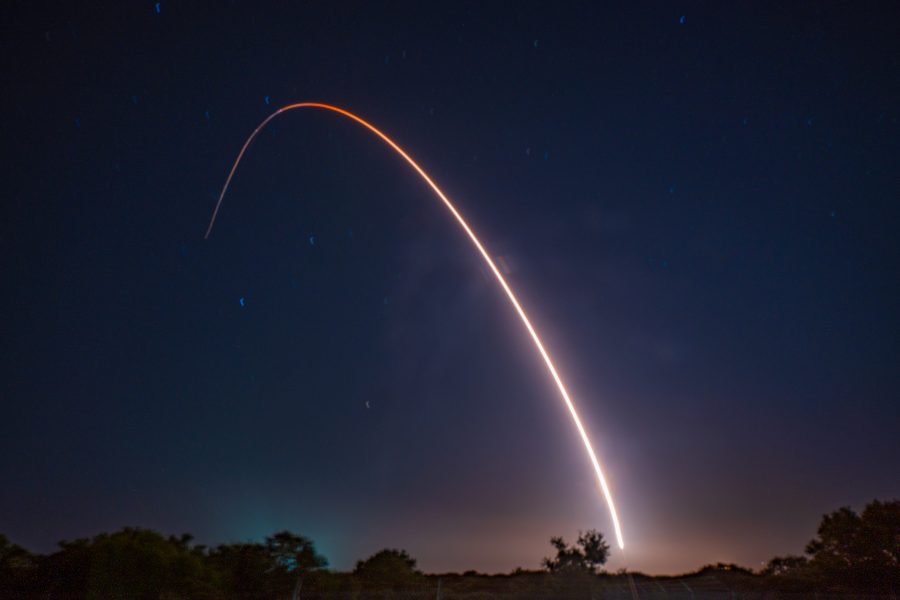The Air Force believes it could continue to operate its Minuteman III missiles until 2050 if needed, according to a newly released report from the Government Accountability Office—but doing so poses serious challenges to sustain their aging technology.
Congressional watchdog GAO completed a classified report on the transition from Minuteman to Sentinel in April, and only put out a public version Sept. 10.
Noting that the Air Force previously concluded “Minuteman III would reach the end of its service life in 2036,” the GAO report said the Air Force had since revised its calculus. “Now, facing delays to Sentinel, the Air Force is evaluating options to continue operating Minuteman III through 2050. The Minuteman III Program Office concluded that operation of Minuteman III until 2050 is feasible.”
The Air Force has 400 Minuteman IIIs on alert in silos spread among five states. Sentinel would replace Minuteman on a one-for-one basis, following a phased approach such that the last Minuteman III would only come offline when the 400th Sentinel is armed and ready. Full operational capability for Sentinel had been set for 2036, but schedule delays mean some Minuteman missiles may need to be operational beyond that time.
Keeping Minuteman until 2050 would carry significant risk, and would require overhauls for certain subsystems. Given the aging technology, sourcing parts will only get more difficult, and sustaining flight tests would also be a challenge.
It’s not just the missiles that are at issue. “Air Force officials told us that although they are confident that Minuteman III can be used beyond 2030, even out to 2050, they acknowledged there are unknowns such as ground electrical subsystems and electronics—for example, diodes, resistors, and capacitors—which could degrade to unacceptable levels,” the GAO authors wrote.
More specific details on sustainment risks were deemed classified and not included in the public report.
An Air Force spokesperson told Air & Space Forces Magazine that the Minuteman III program office regularly conducts reviews to determine how long the ICBM fleet could feasibly serve and that the 2050 date is not tied to any delays with Sentinel.
The first operational Minuteman III missiles were deployed in 1970 with an expected service life of 10 years. They have been extended time and time again, and pushing them to 2050 would make them among the oldest and longest-serving weapons in the Pentagon’s inventory.
U.S. Strategic Command and Air Force officials have repeatedly argued Minuteman III must be replaced without delay and point to its outdated parts, electronics, and launch facilities as serious risks to the ICBM enterprise and by extension, U.S. nuclear deterrence.
Yet Minuteman’s planned replacement, Sentinel, has suffered major cost and schedule overruns, raising serious doubts as to whether it could meet a requirement by STRATCOM to have an initial operational capability by September 2030.
The Sentinel program is currently being restructured following a Pentagon review. Lead contractor Northrop Grumman said in July it had agreed with the Air Force on an “approach which will lead to re-establishment of the program baseline.”
Most of Sentinel’s problems stem from the infrastructure, not the missiles. Early plans to update existing silos ran into trouble, and officials now believe it’s cheaper to build new than try to retrofit 50-year old structures. The Minuteman facilities date back even further than the missiles, and while the Air Force originally planned to refurbish them, officials now say they have determined it will actually be cheaper to build entirely new launch control facilities and silos, complete with miles of cables, pipes, and wires.
Anti-nuclear activists and some thrift-conscious lawmakers have called for canceling the program. But Kyle Balzer, a fellow at the American Enterprise Institute, said that would be a mistake.
“The Air Force has done an extraordinary job extending its life, but as this report pointed out, there’s still major risks involved in that, major unknowns, primarily with the electronics, the ground subsystems, the degradation of those component parts,” Balzer told Air & Space Forces Magazine. “And I mean, former STRATCOM commander [Adm. Charles] Richard has testified that we can’t keep extending the life of Minutemen. Our Air Force maintainers are extraordinary at their job, but you know, these component parts are going to eventually degrade, and there’s going to be age-related attrition.”
Retired Air Force Col. Jennifer Reeves, a former commander of an ICBM wing, also argued that the 2050 projection in the GAO report doesn’t fundamentally change the need for modernization.
“Listen, man, at some point we have to go to a new weapon system, and each time we delay, it’s going to get more expensive,” she said. “We’re definitely going to do what it takes to keep Minuteman going as long as it absolutely can. But the weapons system gets a vote. … Things will eventually just break.”
When that happens, the U.S. cannot afford to be without a viable land leg of its nuclear triad, Balzer said.
“Deterrence is very much fundamentally about political resolve. And I think if we were to cancel Sentinel, we would … send a wrong signal to China and Russia about our national will and resolve.”
The GAO report does not call for Sentinel to be abandoned. Rather, it recommends that the Air Force develop a risk management plan for its transition from Minuteman to Sentinel and plans for how it will manage personnel and flight testing during that transition, as well as several other points.
The Air Force concurred with the report and the recommendation.


